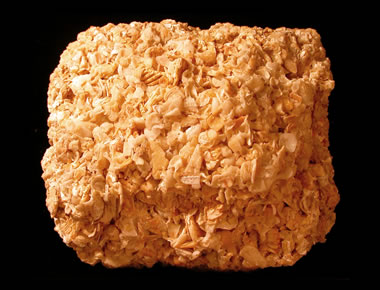Oldest House Museum Complex
St. Augustine, FL
February 17th, 2022
https://staughs.com/oldest-house-museum-complex/
Description
The Oldest House Museum Complex is ran by the St. Augustine Historical Society. Encountering the Oldest House Museum Complex includes a guided tour of Florida's Oldest House, a detailed history museum, a rotating exhibit gallery, the surf museum, and the Gonzalez-Alvarez House. The Gonzalez-Alvarez house reveals evidence of the First and Second Spanish, British, and American occupations of St. Augustine. There are explanations on the daily lives of the settlers, and insightful discussions on building use, archaeology, lifestyle, and culture on the Florida frontier. We also were given the opportunity to see Professor Mongiovi's indigo room, cotton, rice, sugar, and citrus room, as well as the fur, hide, and coquina room in the top of the Tovar House. Right under was the St. Augustine Surf Culture and History Museum which is interactive and interprets more than fifty oral histories, hundreds of historical images, film, music, artifacts, memorabilia, trophies, articles, and historic surf boards.
Exterior Photo #1
Exterior Photo #2
Artifact #1
This rope is a lead line and an ancient navigational used for sounding, which measures the depth of water. It also picks up items among the ocean floor which provided useful information for piloting and anchoring boats.
Artifact #2
Floridae Americae Provinciae (1591)-
Sir Walter Raleigh commissioned artist Jacques Le Moyne de Morgues to illustrate expeditions throughout Florida. The map was later engraved by Theodore De Bry. Jacques Le Monye survived the 1565 Spanish attack against the French Huguenots at Matanzas Inlet in effort to push the French out of Spain's territories in the Americas. Le Monye was an artist and recreated this map from memory because most of his work was lost in the attack.
In Conversation Image #1
 https://geology.com/rocks/coquina.shtml
https://geology.com/rocks/coquina.shtml
Since the Oldest House was made of coquina, I decided to make it my first in conversation image. Coquina is a sedimentary rock composed almost entirely of sand-size fossil debris (usually mollusk or gastropod shells and shell fragments). The fossil debris of coquina is composed of calcium carbonate, making coquina a variety of limestone. Most coquina forms in shallow coastal waters where a steady and abundant supply of sand-size fossil debris is delivered by wave action and currents. The waves and currents must be strong enough to completely remove clay and silt-size particles, but not so strong that the accumulation of sand-size fossil debris is eroded. Blocks of coquina have been used to construct walls, small buildings, and monuments. In these uses coquina can last for decades. Eventually, it crumbles and fails. This failure can be delayed if the rock is sealed by plastering. As a construction material, coquina usually does not meet durability specifications. The rock has a high porosity, and the grains are poorly cemented together, giving it a low compressive strength and a low abrasion resistance.
In Conversation Image #2

https://www.surfertoday.com/surfing/the-effects-of-surfboard-design-in-wave-performance
Inspired by the different surfboards I saw in the Surf Museum, my second in conversation image shows the variety and purpose of different surfboard shapes. Each surfboard shape will behave differently when you take off on a wave, bottom turn, accelerate down the line, and control the surfboard on the face of the wave. Surfboard shapes with a tail that has rounder angles or no angles, is going to help you hold the water for a little longer. This will translate into more control of the board. When you get harder angles in the tail, more water will release and give you a looser, more snappy feel to the board. The overall shape of your board, taking into account nose & tail shape, will essentially determine how your board performs.
Passage/ Concept from ENG202
The poetry of St. Augustine being “Floridanos, Menorcans, Cattle-Whip Crackers” by Ann Browning Masters has an excerpt titled “In St. Augustine, Land of Flowers, Who Were Floridanos, Menorcans, Cattle-Whip Crackers.” It includes a lot of information from the first Spanish period (1565-1763), the British period (1764-1784), and the second Spanish period (1784-1821). It includes when Spanish citizens born in St. Augustine were recorded as “Floridanos” in the census sent to Spain (first Spanish period), when several Floridano men remained in St. Augustine but most went to Cuba and Spain and indentured servants walked to St. Augustine from failed indigo plantations who are a group of Roman Catholics and Greek Orthodox eventually became known as Menorcans (British period), and when some Floridanos returned to St. Augustine from Cuba and Spain and intermarriage between Floridanos and Menorcans began (second Spanish period).The Oldest House includes the Gonzalez-Alvarez house which reveals evidence of the First Spanish, Second Spanish, and British periods and occupations of St. Augustine. There are explanations on the daily lives of the settlers, and insightful discussions on building use, archaeology, lifestyle, and culture on the Florida frontier.
Creative Component
I decided to make a few pies in honor of professor Mongiovi's sugar room. I often make pie's dedicated to holidays or my family members birthday's. I made these two peanut butter and chocolate pies with graham cracker crust topped with Reeses cups while incorporating hidden Reeses pieces inside the peanut butter filling. Since I made them in my dorm, I had to do some improvising. I typically homemake the crust but this case forced me to buy pre-made crust. These are also no-bake pies since I don't have an oven in my dorm- instead I froze them in my mini fridge.
 https://geology.com/rocks/coquina.shtml
https://geology.com/rocks/coquina.shtml









No comments:
Post a Comment